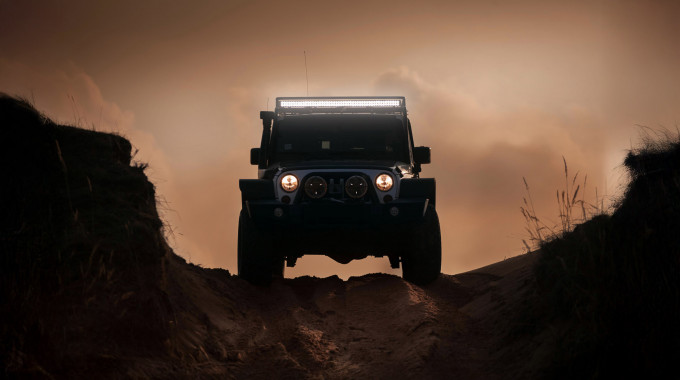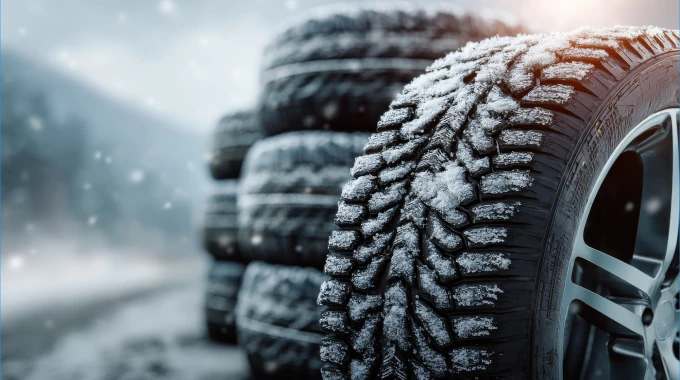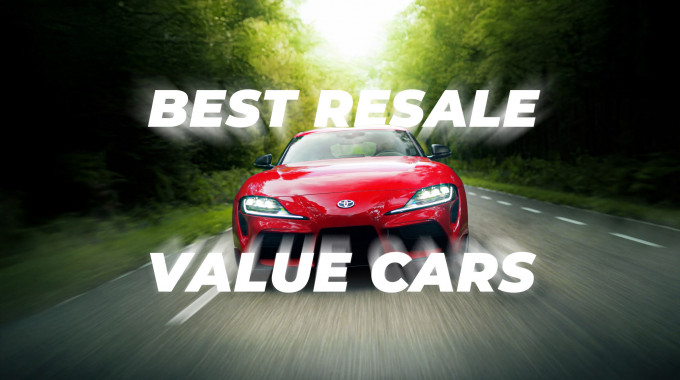
Best Used Wagons To Buy [2011-2021]: 6 Models That Top Our List
The poor station wagon has had a rough go of it since the 1980s. First the minivan came along, putting seven-passenger seating in a footprint smaller than many mid-size wagons, which made them easier to fit in suburban garages and parking lots.
Then in the 1990s, it was the SUV’s turn to steal the wagon’s thunder, and along with the more car-like crossovers that followed, sport utilities gained more and more market share. By around 2010, station wagons were, at best, an afterthought in a handful of automakers’ lineups.
These days, the used car market is where you’ll find the best variety of station wagons to choose from. Here are a few that we think stand out.
Volkswagen Golf SportWagen/Alltrack, 2017-2019

2018 Golf SportWagen | Photo: VW
- Why we like it: A small car with lots of space, optional AWD traction, and an enthusiast-friendly manual transmission.
- Specifications: 1.4L and 1.8L turbocharged four-cylinder; 147 to 170 hp; six-speed manual and automatic transmissions with FWD/AWD
In 2017, Volkswagen introduced what would be its last compact station wagon model for North America, the Golf SportWagen.
The SportWagen lineup included an Alltrack model that matched all-wheel drive with a taller suspension, previewing the Taos subcompact crossover that arrived for the 2022 model year. Volkswagen also offered AWD as an option in the regular Sportwagen.
If you want an idea of what you’re missing with the disappearance of station wagons, consider that the Golf Sportwagen has more cargo space than the trendier Taos crossover that effectively replaced it in VW’s lineup.
For driving enthusiasts, the cherry on top of the Golf SportWagen is that VW offered a manual transmission with every powertrain configuration. Five- and six-speed manuals could be mated with either a 1.8L turbo four-cylinder making 170 hp and 184 lb-ft of torque or, starting in 2019, a 1.4L engine with 147 hp/184 lb-ft that served entry-level front-wheel drive SportWagen models.
As those power figures suggest, no version of the SportWagen is particularly sporty. However, handling is agile – especially in the lower-slung non-Alltrack models – and ride quality is excellent.
Whether you’re looking for a well-executed small family car or an ultra-practical daily driver, the Golf SportWagen is one of the auto industry’s most appealing modern wagons.
Volvo V90, 2017-2019

2017 V90 | Photo: Volvo
- Why we like it: What will probably be Volvo’s last mid-size wagon offers timeless styling inside and out.
- Specifications: 2.0L turbocharged and supercharged four-cylinder; 316 hp; eight-speed transmission with AWD
In North America, there is perhaps no automaker more closely associated with station wagons than Volvo. But while vintage car enthusiasts go gaga over the ugly-beautiful 240 that sold well into the 1990s, Volvo’s modern wagons are some of the best-looking cars the brand has ever made.
Take the V90, a mid-size model that arrived in 2017 as a spin-off of the S90 sedan. Where many automakers use styling cues like large and/or oddly shaped grille openings to help their vehicles stand out, Volvo opted for a subtler approach with the V90. Up front, Volvo’s “Thor’s Hammer” headlights are a key identifying feature, while the V-O-L-V-O nameplate stretching across the tailgate is a styling cue cribbed from Volvos of decades past.
Our only wish for the V90 is that Volvo had offered it with the S90’s optional plug-in hybrid powertrain: Not only does it get better city-driving fuel economy than the V90 and allow some electric driving range, but it boasts 30 per cent more horsepower and 60 per cent more torque.
Toyota Prius V, 2012-2019

2012 Prius V | Photo: Toyota
- Why we like it: A spacious take on Toyota’s ultra-efficient and reliable Prius hybrid.
- Specifications: 1.8L four-cylinder engine and electric motor; 136 hp; continuously variable transmission; FWD
We realize the Toyota Prius is not everyone’s cup of tea, with its wishy-washy driving feel and the polarizing styling of its newer generations. But if you go back to the third-gen family of Prius models, you’ll find the Prius V, which we think is one of this model’s most compelling variants.
For one thing, the Prius V’s styling is quite conventional compared to most other versions of the well-known hybrid, with a larger body contributing to handsome station wagon proportions. It’s also vast inside, with more rear-seat legroom and all kinds of cargo space.
On the downside, the V is heavier and less aerodynamic than the regular Prius liftback, which means the gas-electric powertrain works harder and uses more fuel. Still, with gas prices in some parts of Canada approaching $2.00/L as we write this, the Prius V’s combined fuel consumption estimate of 5.6 L/100 km looks pretty good.
If you’re in the market for a reliable A-to-B family vehicle that goes easy at the gas pump, the Toyota Prius V is hard to beat.
Audi A4 Allroad, 2013-2021

2020 A4 Allroad | Photo: Audi
- Why we like it: Audi puts its trademark tasteful touch on a practical compact wagon with crossover-like ground clearance.
- Specifications: 2.0L turbocharged four-cylinder engine; 211 to 261 hp; seven- or eight-speed transmission; AWD
Europe’s automakers are the last holdouts in North America’s station wagon segment, collectively offering a handful of wagons to appeal to the small number of luxury-car buyers who have yet to migrate to an SUV or crossover.
With the A4 Allroad, Audi toes the line between a traditional wagon and a modern crossover: It’s based on the European-market A4 Avant but rides on a taller suspension and comes dressed with some SUV-like styling tweaks.
If we’re being honest, we would be thrilled if Audi sold the A4 Avant here. But if we can’t have that car, then the Allroad is a fine compromise. It’s handsome, it gets decent fuel economy, and the raised suspension makes it feel unbeatable when there’s heavy snow or rough roads between you and your destination.
High-tech touches include a digital gauge cluster, and in 2021, Audi made a mild hybrid drivetrain standard that adds a bit of power and reduces fuel consumption.
Scion xB, 2011-2015

2011 xB | Photo: Scion
- Why we like it: The xB is a quirky box on wheels that’s very easy to live with.
- Specifications: 2.4L four-cylinder engine; 158 hp; five-speed manual or four-speed automatic transmission; FWD
The Scion brand was Toyota’s experiment to attract a more youthful demographic to its showrooms and, in turn, create a more fun-loving image for itself. It didn’t work out for Scion, but while it lasted, the short-lived brand did turn out some neat vehicles, like the xB.
Think of the Scion xB as a Toyota Corolla station wagon and you’ll have a good idea of how it drives and what it’s like to spend time in the cabin. There’s plenty of headroom, good cargo space, and the large tailgate makes it easy to load bulky items. Inside, you’ll find a few neat things that were uncommon in economy cars of the day, like a digital speedometer.
The 158-hp engine makes good mid-range power for highway driving; however, even at the time, the optional four-speed automatic was an outdated piece of machinery.
Ultimately, much of the xB’s problem was that Toyota shoppers flocked to the Matrix and its more conventional compact hatchback styling. But if you want a wagon that won’t blend in, this boxy Scion won’t let you down.
Cadillac CTS-V, 2011-2014

2014 CTS-V | Photo: Cadillac
- Why we like it: This wagon goes like stink, but its styling doesn’t advertise it.
- Specifications: 6.2L supercharged V8; 556 hp; six-speed manual or six-speed automatic transmission; RWD
Through three generations, the Cadillac CTS attempted to remake this luxury brand’s staid image to help attract younger buyers, and no version fulfilled that mandate better than the second-generation CTS-V wagon, with its 556-hp supercharged V8.
The CTS station wagon was never a big seller, and the CTS-V’s big price and bigger fuel consumption made it even more of a niche product; when the CTS-V wagon was new, Cadillac’s fuel consumption estimate for city driving was a whopping 20.0L/100 km with the automatic transmission.
Still, if you can find one on the used market, you’ll take home a practical car that is as well suited to hauling around a racetrack as it is hauling your family on a road trip: Cadillac’s magnetic shock absorbers let you toggle between daily driving comfort and road-hugging control.
A bonus is that well-maintained examples of the CTS-V wagon have proven pretty reliable, given the wild performance the powertrain puts down. Buyers looking for a no-compromise combination of speed and practicality will find plenty to like in this Cadillac station wagon.







